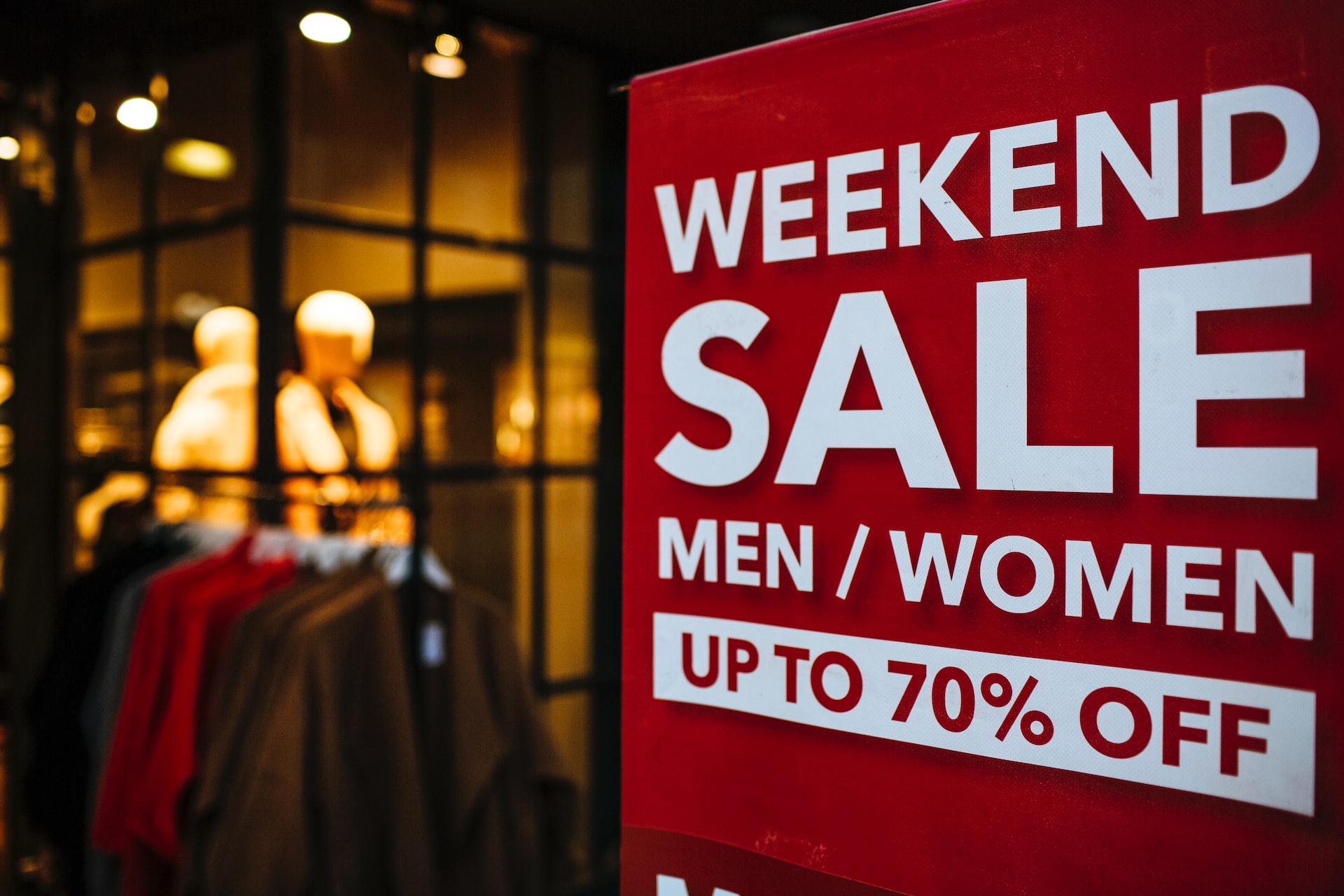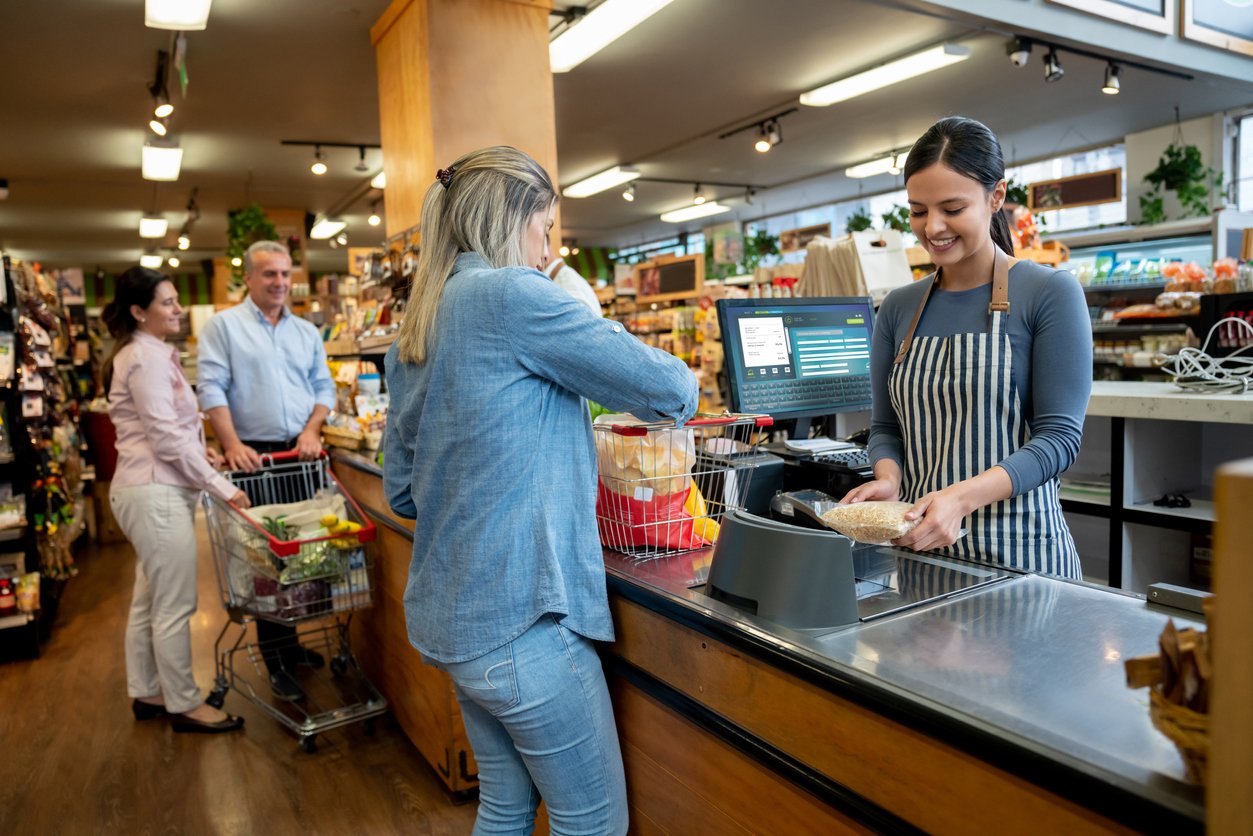Five Areas of Focus for Branded Environments in Peak Season
Customer wants and needs have evolved since January. We know this because we wrote about them eight months ago, and consumer sentiments and the economic outlook are much different today.
Pandemic worries from 2020 and 2021 lingered into 2022, but they’re no longer top of mind as we head into peak retail season amid enduring inflation and mixed economic signals for businesses and their customers.
Still, as always, one market truth endures. Retailers, banks, restaurants and other types of branded environments that best react to evolving customer wants and needs will outshine their competition and increase their market share.
So here are five areas worthy of special focus as we turn toward peak season and 2023.
 Photo by Markus Spiske on Unsplash
Photo by Markus Spiske on Unsplash
Black Friday starts now
Hershey’s CEO Michele Buck told CNN in July that she expects a candy shortage this Halloween.
“We will not be able to fully meet consumer demand,” she said.
Yikes! So, if you want Halloween-themed candy this year, you might want to start buying now. Same goes for peak season.
Despite inflation and economic uncertainty, consumer demand is still high, and manufacturers are sometimes struggling to meet it, whether that’s about supply chain issues or the labor shortage. Savvy shoppers are aware of this, and they will be looking for good deals on specific products well before the weather turns cold.
This isn’t new. Holiday shopping has been getting earlier and earlier for a decade, according to Deloitte’s annual Holiday Retail Survey, and Google Data notes consumer interest has started in September for several years.
To meet this demand, take a proactive approach with your suppliers and fulfillment partners. Account for longer lead times and potential delays, as well as warehousing and inventory management, while also paying close attention to total costs and data that weigh the risks of missed sales versus overstocked stores.
Further, reward your savvy early shoppers with deals well before the frenzy of November.
It once was verboten to showcase a holiday season display before Thanksgiving. No longer. In fact, some self-aware humor might be appropriate in your merchandising, such as Santa exchanging good cheer with a Halloween skeleton and smiling pumpkin, noting a special deal for super-motivated customers looking for popular products.
Omnichannel is a continuous path, not a static destination
Gen Z, your next generation of customers, is growing up completely immersed in technology, video games, social media and streaming. They represent 60 percent of Metaverse users.
But wait. When asked where they like to shop — in all categories — on different legs of the consumer journey, “73 percent said they used in-store for discovering products; 65 percent liked in-store for trial; and a staggering 81 percent like to purchase in-store,” according to Kearney.
Mixed signals for brick & mortar and technology? Nope. That’s the future. Your stores need to be optimized for the best possible customer experience, as do your digital channels and social media engagements. Shoppers now expect your mobile app to supplement and improve the in-store experience, just as they want it to provide a frictionless purchase from their sofa.
And the Metaverse? It’s time to consider how it might be used to attract and nurture new customers, celebrate your brand and generate revenue, as virtual worlds will become new fronts for brands to compete for market share.
"What we’re in now is a really exciting time for brands to start to experiment and learn—with little risk," said Tina Chadwick, Miller Zell SVP for Strategy/Creative/Digital. "The early adoptors are trying new things very publicly with all eyes watching. Others are experimenting within more private environments, taking on a test and learn cadence until they get their arms around the who and why that will interact with them in the Metaverse."

Fast checkout = happy customer
You strategically used relevant data to understand and prepare for increased customer traffic and basket size during peak season. Your store looks great. Your inventory is optimal. You’re well staffed.
Good for you. But did you know that a long checkout experience can ruin everything? As in: 77 percent of shoppers are less likely to return to your store if they feel they spent too much time waiting in the checkout line.
Many customers still seek out standard checkout with an associate at a cash register. Serving them includes using data to identify peak hours that require more staffing, as well as ensuring that staff is fully trained to perform as efficiently as possible. But it’s now necessary to offer a variety of checkout paths that improve the efficiency of the process and thereby enhance the customer experience.
This includes BOPIS, self-checkout, mobile POS systems that allow associates to check out customers throughout the store, accepting mobile payment methods, such as Apple or Google Pay or PayPal, and even technology supporting no-contact checkout that allows customers to simply grab and go.
Just adopting new technology isn’t the endgame, though. It’s critical to provide adequate training and quality control and to anticipate potential execution hiccups. Efficient and pleasant responses to problems often positively register with customers as much as a frictionless store visit.
Customer experience is connected to associate experience
Retail hiring and retention became a national news story during the pandemic, and the labor market remains difficult. Peak season is notoriously challenging for retail associates. Crowds of demanding customers with high expectations for service and available products can provoke stress and anxiety instead of holiday joy.
So when mapping out your peak season customer experiences, don’t forget the important role the associate experience plays. Support them and anticipate and reduce their difficulties so they serve your customers in the best possible frame of mind.
For example, does your digital integration plan include technology and training that support your associates with their customer interactions? Can your associates use a tablet or mobile app to quickly find products and product information in-store? And when a product is out of stock, can they easily provide an online route for purchase and delivery?
Customers who enjoy their in-store experience become brand loyal. Not only do happy and capable associates foster that, but they also serve as examples of a positive culture and improve a business’s public reputation.
Holiday sentiments include more than buying and selling
Just as happy associates speak to a strong culture, so does a focus on corporate social responsibility and giving back to your community. It’s notable that just about every seasonal movie or TV show emphasizes that the holidays are about more than giving and receiving gifts.
Many of your customers are socially conscientious and value sustainability. Therefore, include your good works and initiatives as part of your brand storytelling during an extended season when giving back is celebrated even more than usual. Provide your customers information on your green initiatives, philanthropy and corporate social responsibility.
Edelman’s 2022 “Trust Barometer” is titled, “Societal leadership is now a core function of business.” It found that 58 percent of respondents, “will buy or advocate for brands based on their beliefs and values,” while 80 percent “will invest based on their beliefs and values.”
The conscientious consumer is real, and businesses that emphasize values and corporate responsibility will build customer loyalty.


